The Role of the EU HR/VP in the Promotion of Gender Equality Norms
Putting gender equality at the heart of the Union’s external policies was one of the key messages that Josep Borrel expressed when presenting the latest Gender Action Plan in November 2020. Borrell is the current High Representative and Vice-President (HR/VP) of the European Union (EU) and is often considered the chief diplomat of the EU. The Lisbon Treaty mandates the HR/VP to conduct, represent and express the EU’s foreign policy. The latter is shaped by a normative and value-based approach being guided by the principles of democracy, rule of law and human rights. In this context gender equality has become one of the core values of the EU and was included in the EU Charter of Fundamental Rights. According to the HR/VP, the EU takes concrete actions to build a gender-equal world. However, it may be wondered what role the HR/VP plays in reaching this goal. What can be expected from a HR/VP in the promotion of gender equality norms?
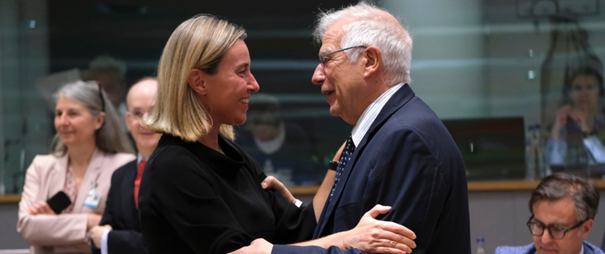
I addressed these questions in my Master’s thesis. In the following, I present a summary of my work. I conducted a literature review to contextualize the research puzzle. A triangular approach was employed to provide an overview of the relevant scholarly debate. Firstly, I introduced the constructivist literature on norm diffusion, Ian Manners’ concept of Normative Power Europe and its nexus to the gender equality norms. GENs were defined as an umbrella term for different concepts that address gender-based discrimination in a liberal, holistic, or intersectional manner. Among others this includes gender mainstreaming, women’s empowerment or preventing violence against women (Fejerskov et al., 2020, p. 11). Secondly, the debate on the EU’s role in gender equality promotion was presented being complemented by the literature on the HR/VP. This third element offered valuable insights in the conceptualizations of the role and case-related analyses. However, the role of the HR/VP in norm diffusion or the promotion of gender equality norms had not yet been analyzed. Aiming to fill this gap, a research design was established taking a two-tier approach. Firstly, hypotheses about the ideal role of the HR/VP were developed.
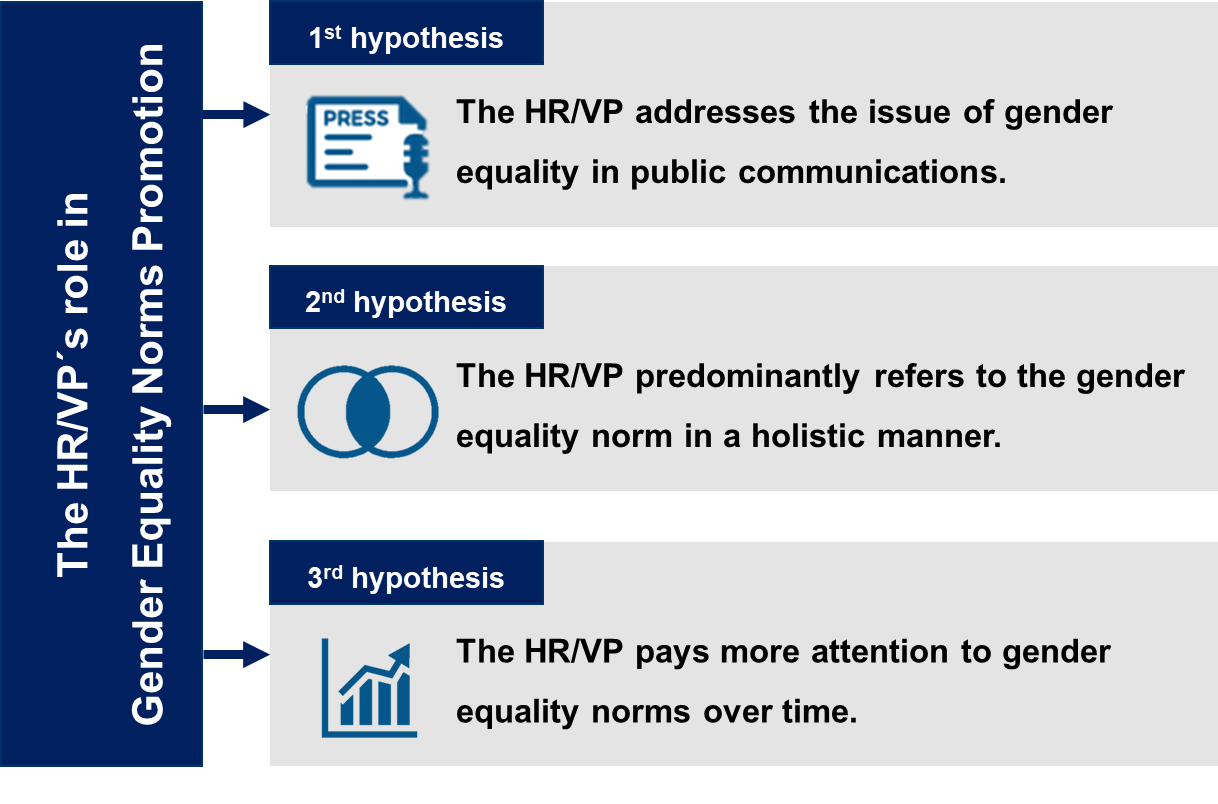
The literature and legal framework provided grounds to formulate expectations. This step provided answers to the first sub-research question. The hypotheses addressed the core of the remaining three sub-research questions. It was assumed that the HR/VP would address the issue of gender equality in public communications. Furthermore, it was expected that the HR/VP would predominantly refer to the gender equality norm in a holistic manner. Finally, it was assumed that the HR/VP would pay more attention to GENs over time.
Following this, the analytical framework was designed to test the hypotheses. Drawing from Mayring’s qualitative content analysis, a 9-step model of investigation was developed (Mayring, 2000, 2015; Mayring & Fenzl, 2019). It entailed the formulation of the research questions and objectives providing grounds for the choice of sources.
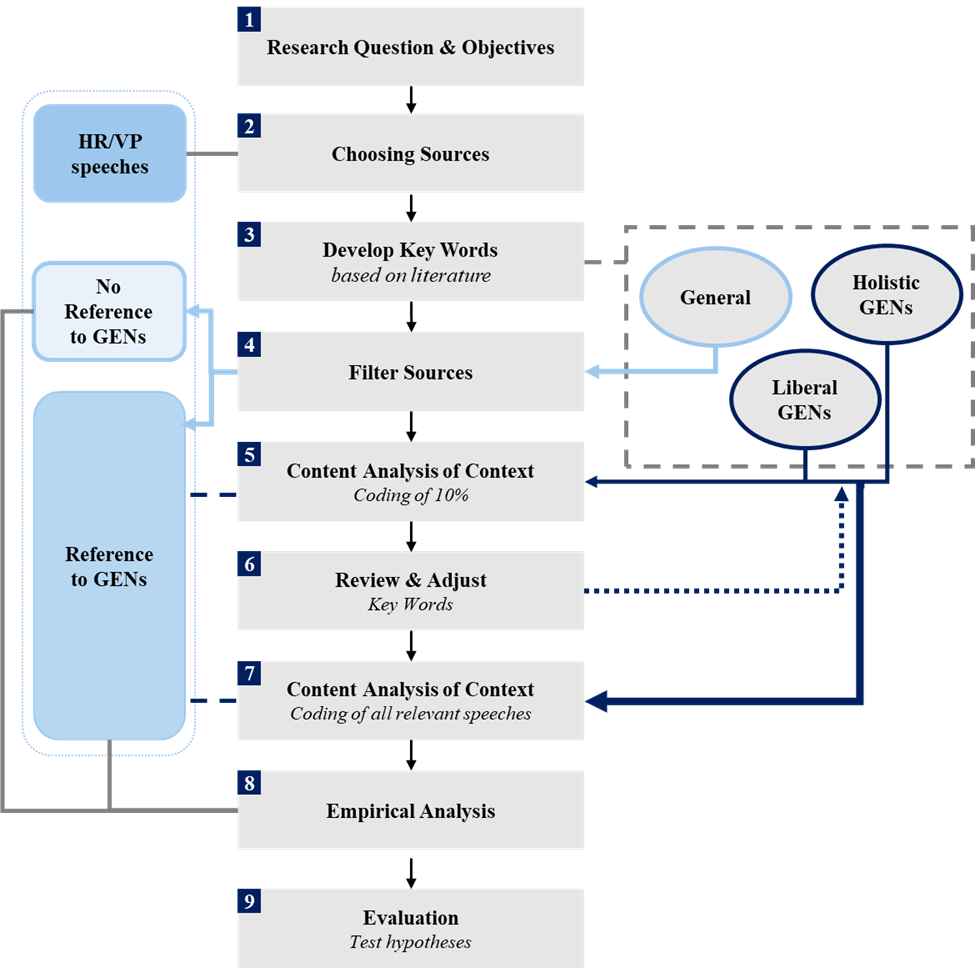
This work selected all published speeches by the HR/VPs within a six-year time period starting in 2015. The total number of 311 speeches was filtered according to a set of key words. Within the deductive research design, three groups of key words were clustered. General key words were used to distinguish between speeches that offered GEN-references and texts that did not. The remaining key words were grouped according to a liberal understanding of GENs and a more holistic understanding.
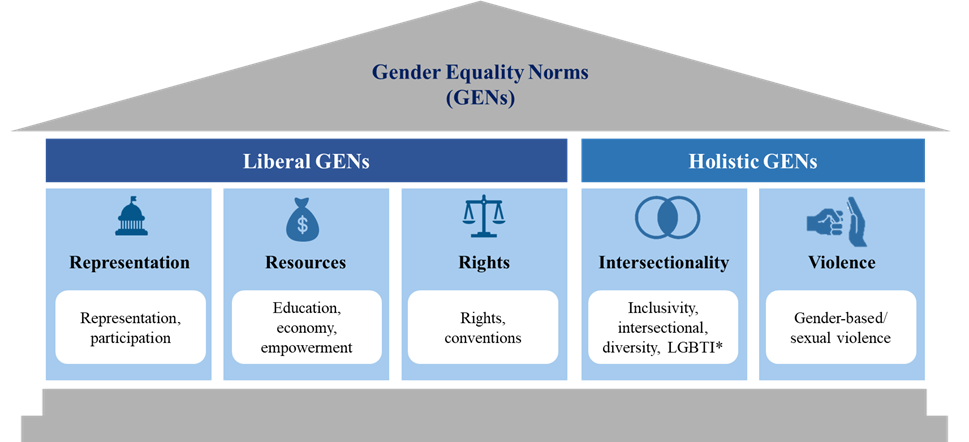
Having filtered the sources, 129 speeches were identified as relevant. Their content was further analyzed with regard to the context in which the key words were used. The liberal and holistic key words were used as categories in the coding process. The first ten percent were coded according to guidelines which were reviewed and updated based on the first round of assessments. This process was conducted again for all speeches. The following empirical results offered valuable insights regarding the frequency, understanding and development over time of GENs. Within the contextualized analysis this number of speeches with references to liberal or holistic GENs was reduced to 91. This is the equivalent to one in four speeches delivered by the HR/VPs. The speeches with GEN-references were further grouped in high-, medium-, and low-frequency groups. There were six speeches that included more than ten references. The majority of speeches entailed only up to three references. Considering that the HR/VP specifically referred to the matter in more than 25% of the speeches throughout a 6-year observation, it can be argued that data confirms the first hypothesis.
In contrast to this, the second hypothesis cannot be confirmed. The number of liberal key words is substantially higher than the number of holistic key words. For every holistic key word, there are more than two phrases which contain a reference to liberal GENs.
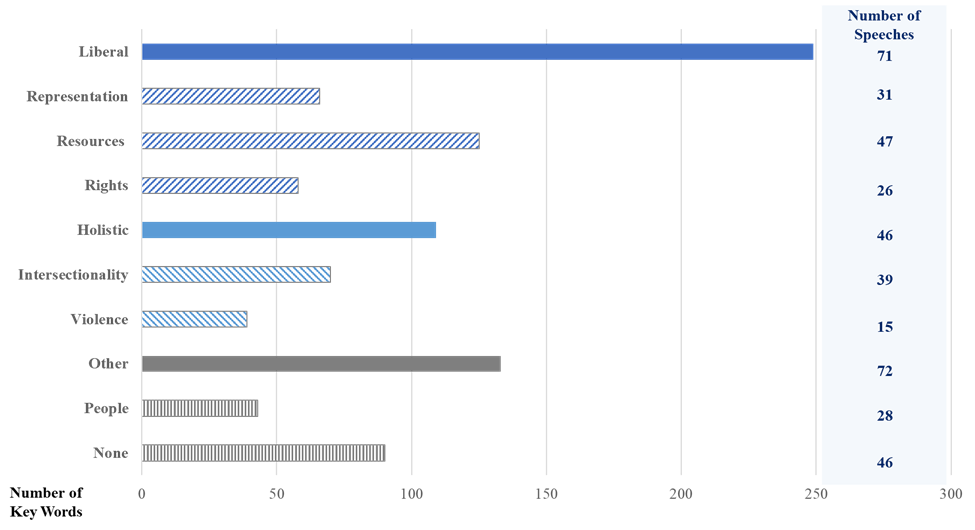
The sub-category resources itself could be identified more often than the holistic sub-categories combined. While it may be argued that there is a certain overlap between liberal and holistic understandings, this is not sufficient to claim that the HR/VP would predominantly address GENs holistically. However, the share of holistic key words increased over time. This was not only true in relative but also in absolute numbers. This relates to the third hypothesis which was built on the expectation that the HR/VP would increasingly address the gender equality norm. This can be confirmed because the number of relevant key words grew over time.

At this point, the limitations of this research need to be highlighted. While the data set included a considerable number of speeches, the HR/VP’s public communication is certainly more diverse. Among others, this includes press statements, remarks or social media postings. Additionally, the observation period does not include Ashton’s term and the selection of sources was based on the published material on the official website of the EEAS. The definitory challenges of GENs and the distinction between different (sub-)categories have been addressed throughout the work, but they need to be considered at this point as well.
In summary, this work has proven that the HR/VP addressed GENs in public communications. When doing so, the HR/VP shows a holistic understanding, but does not do this predominantly. Additionally, the emphasis of GENs has increased over time.
Thank you for investing your time in reading this post. If you have feedback, questions or concerns, feel free to reach out to me on twitter.
Attachments
Thank you for providing the photos Bundeskanzleramt and Centre for European Reform